Collectively, US consumers eat 5.95 billion pounds of pasta every year, according to the National Pasta Association. And as long as proper portions are observed and the right sauces and toppings are added, eating pasta is linked to some pretty impressive health outcomes, like a reduced risk of heart disease and stroke among certain populations.
People run into trouble when they are eating portions that are too large (note that one serving of pasta is one half of a cup when cooked), and they are topping their pasta with unhealthy sauces or proteins that are fried or loaded with saturated fat. Forgetting to include vegetables in pasta dishes can result in people missing out on satiating fiber and health-supporting micronutrients as well.
There is no disputing that homemade pasta sauces are absolutely delicious, and these are typically made with higher quality ingredients than store-bought. And while some people enjoy taking the time to make a Sunday sauce, others simply don’t have the time to spend stirring and chopping. Instead, they lean on jarred pasta sauces, which may or may not be a positive addition to a healthy diet, depending on which sauce is chosen.
Minimal ingredients is the name of the game when picking your pasta sauce. Herbs and spices should be used instead of artificial or “natural” unspecified flavors. And whenever possible, preservatives should be kept to a minimum. And while sugar may not be top-of-mind when it comes to a pasta ingredient, the added sugar content is an important “watch-out,” as some varieties can have as much of the sweet stuff as a scoop of ice cream!
When you are perusing the pasta sauce section of your grocery store, here are seven choices that are made with lower-quality ingredients that you may want to avoid.
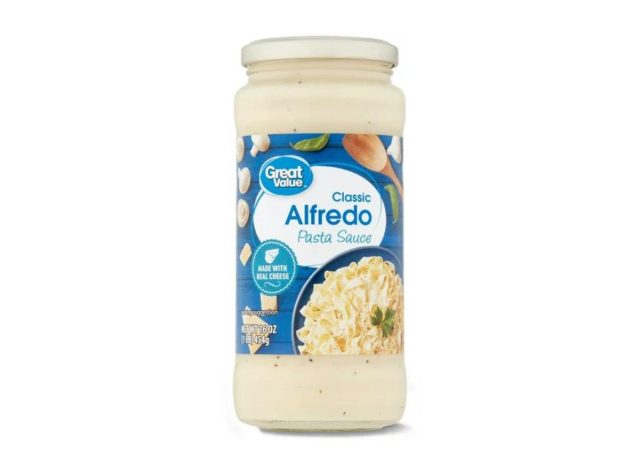

The Walmart brand’s Alfredo sauce isn’t the best option for your health. With 340 milligrams of sodium, it is one that isn’t ideal for those managing their intake of this mineral. And with ingredients like cream and sunflower oil, it is clear that there are some better options out there to satisfy your creamy sauce craving.
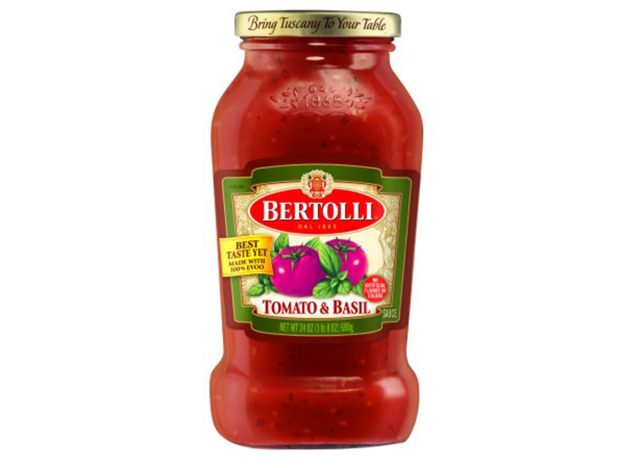

Believe it or not, this sauce contains a whopping 11 grams of added sugar. And when you consider that one serving of ice cream contains 14 grams, it is a wise move to opt for a lower-sugar option.
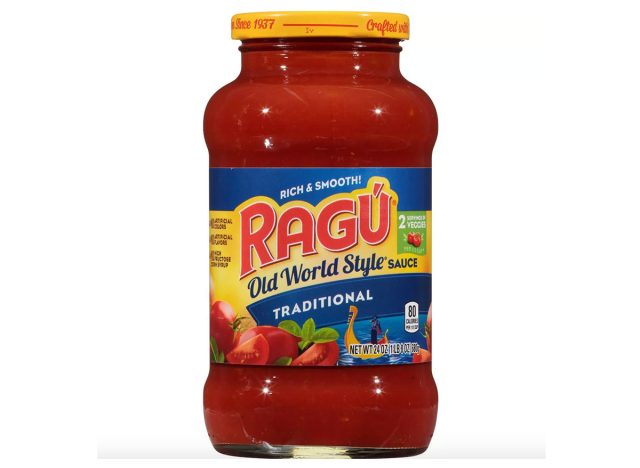
READ RELATED: UFC president Dana White is given 10 YEARS to live after controversial DNA test

This marinara tastes delicious over a bowl of pasta, but the ingredients can be a bit questionable for some. Thickeners are added, soybean oil is used instead of olive oil, and there are added sugars. While eating this sauce won’t totally derail your health goals, there may be some better options out there.
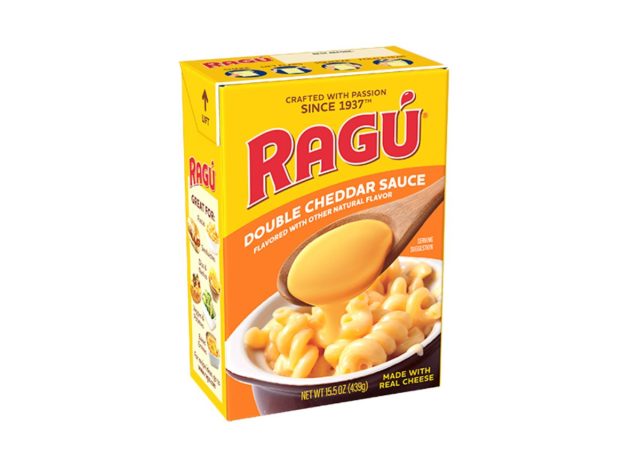

Made with natural unspecified flavors and added colors, this sauce isn’t as high quality as it could be. And with 3 grams of saturated fat, it isn’t the healthiest either.
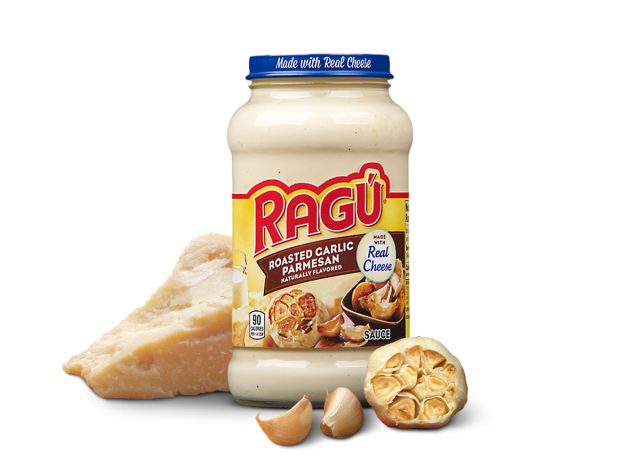

Being made with preservatives and having the second ingredient be soybean oil, this sauce isn’t made with the highest quality ingredients. A small portion may be ok, especially if it is paired with a lot of vegetables and an appropriate portion of pasta, but eating it every day or in large quantities is probably not the best idea.
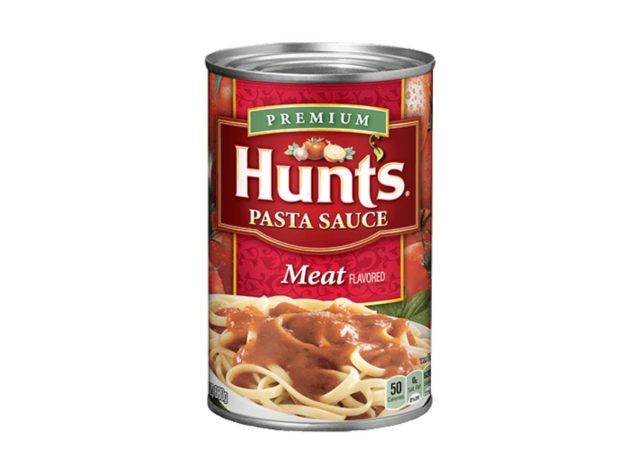

High fructose corn syrup is an ingredient that adds some major sweetness to dishes. Unfortunately, this ingredient is linked to some unsavory health outcomes, including an increased risk of obesity. This sauce also has added beef fat and sugar, two ingredients that are not ideal to find in pasta sauces in large quantities.
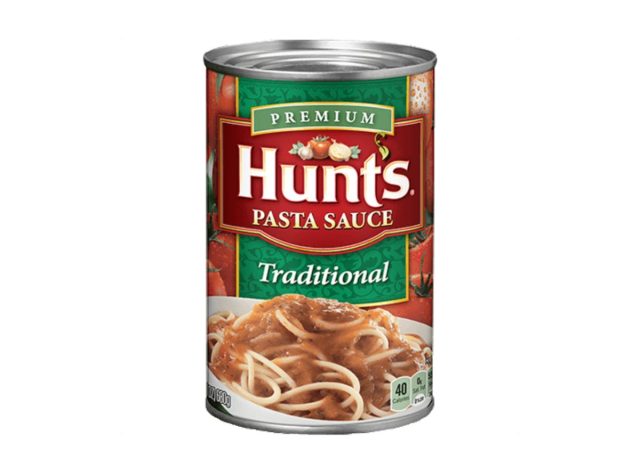

Between the high fructose corn syrup and the sugar, there are many other traditional pasta sauces to choose from that are made with higher-quality ingredients. This sauce is made with real tomatoes though, which is great for people who are not meeting the recommended amount of fruits and veggies every day.
If you have the time and energy to make your own pasta sauce for your next dinner meal, you can save yourself from some of the lower-quality ingredients found in these jarred sauces. But if you’re in a time crunch or just not in the mood to cook, make sure you read the nutrition label in order to find a healthier store-bought sauce option.
Lauren Manaker MS, RDN, LD, CLEC
Source:







